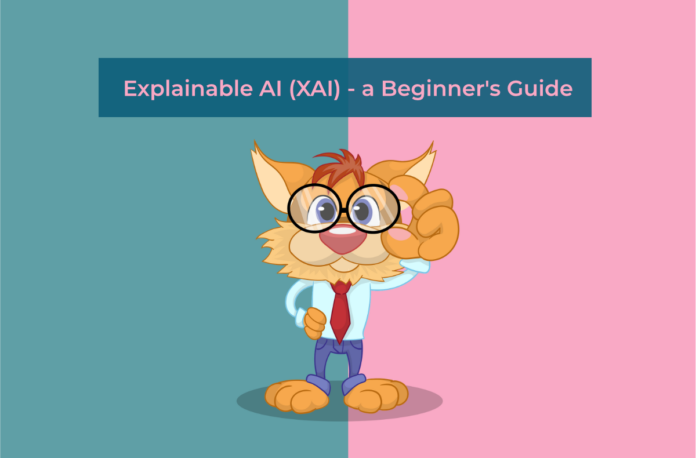Let’s face it, with the introduction and inception of artificial intelligence, industries have not only changed their way of working but they’re reaping immense benefits due to the efficient workflow.
Where AI has revolutionized the working style and workflow of multiple industries, it also helps in the creation of advanced technologies.
While there are machine learning and deep learning algorithms, which may hardly be grabbed by most people in the tech-arena, for AI engineers and related employees, it is quite easy to understand.
And if you are very much familiar with Artificial intelligence (AI), you might know the self-explaining algorithms that are specifically meant for partners and stakeholders so that they can understand the complete process of transforming the massively complicated sets of real-time data into meaningful in-depth insights.
Known as Explainable Artificial Intelligence or XAI, this algorithm is very helpful for those who want to understand the results of these solutions.
This algorithm is also helpful for AI designers when it comes to explaining how AI-powered machines have been creating a particular kind of outcome or insight for businesses to thrive in the market.
Within the past few years, there have been many developments in artificial intelligence (AI). And these developments in AI have brought to shelves new Machine Learning (ML) techniques to solve the highly complicated problems with higher predictive capacity.
However, this predictive power comes with plenty of complexities that make it difficult to interpret models. Notwithstanding, these models create impressively accurate results, there has to be an explanation to understand and trust the model’s decisions. This is where eXplainable Artificial Intelligence (XAI) comes into the picture.
What is Explainable AI or XAI?
As an emerging arena, Explainable XAI orbits around many different types of techniques when it comes to disrupting the black-box nature of Machine Learning models and bringing about human-level explanations.
Explainable AI (XAI) helps humans in understanding and interpreting the results of the solution. It is certainly not like the concept of the “black box” in machine learning (ML) where even its designers are not able to explain why an AI arrived at a specific decision.
This black box helps in the representation of models that can hardly be interpreted by the people, in other words, opaque models including the extremely-supported Deep Learning models.
Undeniably, all Machine Learning (ML) models are not as complicated as are some in the market today, there’re also some transparent models such as logistic/linear regression and decision trees.
These models tell you about the relationship between the target outcome and feature value that makes it quite easier to understand or interpret. However, this isn’t meant for complex models.
Why is Explainable AI needed or can AI be trusted if you don’t know how it works?
The most-frequently asked question about Artificial Intelligence is, “Can Artificial Intelligence be trusted if one doesn’t know how it works?”
The ideal answer is that Explainable AI helps develop trust. It plays a crucial role when explaining the model’s decisions to be able to trust them.
Best of all, it helps make an informed decision, according to the predictions, where the outcomes of this decision relate to human safety.
Another strong reason why you need Explainable AI is to find out and interpret the bias in these decisions. Since bias is very common to see in many parts of daily life, it shouldn’t be surprising that it can be seen in the datasets used in practice, even the ones that are well-built.
Bias problems cause unfairness between discriminative characteristics.
Explainable AI also helps you in detecting and understanding fairness problems and lets you be able to remove them. Apart from the above reasons, there are also many more reasons why you need XAI.
Four Principles of Explainable AI
There exist four key principles of XAI to interpret predictions from machine learning models.
Many models for Explainable AI include the following categories — user-benefit, societal acceptance, regulatory and compliance, system development as well as owner benefit.
Explainable XAI also has an important role to play when it comes to implementing Responsible AI for AI model explainability as well as accountability.
Principles of Explainable XAI mainly include four guidelines that help a lot when embracing some fundamental properties effectively and efficiently.
The US National Institute of Standards and Technology has come up with these four principles to better interpret how AI models work.
These four Explainable AI (XAI) principles are applied independently and individually from each other to be assessed in their own right.
- Explanation
This major principle obligates an Artificial Intelligence model to generate a comprehensive explanation with evidence and reasoning for humans to understand the process of generating high-stakes decisions for businesses. The standards for these clear explanations are regulated by other three principles of Explainable AI.
- Meaningful
This principle provides meaningful and understandable explanations to human stakeholders and partners of an organization. The more meaningful explanation, the clearer understanding of AI models. The explanations should not be complicated and need to be tailored to stakeholders, both on a group or individual level.
- Explanation Accuracy
This principle orders to accurately explain and reflect the complex process of Artificial Intelligence for producing meaningful outputs.
It helps impose accuracy on a system’s explanations to stakeholders. There can be different explanations and accuracy metrics for different groups or individuals. Thus, it is crucial to provide more than one type of explanation with a 100% accuracy level.
- Knowledge Limits
This principle explains that the AI model operates only under certain conditions as per its design with sets of training data — the knowledge confines to the black box. It should operate within its limits to avoid any discrepancy or unjustified outcomes for any business.
The AI system has to discover & declare its knowledge limits so as to maintain trust between an organization as well as its stakeholders.
Explainable XAI, thus, helps you in enhancing the AI interpretability, assess and mitigate AI-based risks and install AI with utmost trust and confidence.
AI is getting momentum day by day with self-explaining algorithms.
Not only is it essential for employees but also for stakeholders when it comes to clearly interpreting and understanding the smart decision-making process with AI model accountability in ML algorithms, DL algorithms and neural networks for self-explaining algorithms.
After reading the article about the 4 major principles of Explainable AI (XAI), we hope that you would like to know more about an AI, ML, DL and other technologies consultant who can best guide you in implementing artificial intelligence in your business.
If you have any questions about how artificial intelligence (AI) and Explainable AI can help grow your business workflow efficiently and productivity, we would be happy to answer all of them in the comment section below.



